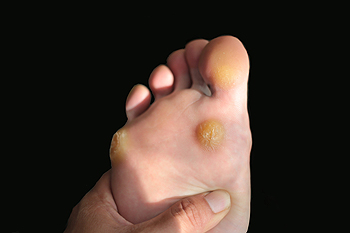Warts are common skin growths caused by the human papillomavirus (HPV) that can occur in children. While Warts Removal in Dubai are usually harmless and may resolve on their own, they can be unsightly and sometimes uncomfortable. When it comes to wart removal for kids, safety is the top priority. This guide explores safe treatment options, methods for wart prevention, and advice for parents navigating wart concerns in their children.
Understanding Warts in Children
Warts are benign tumors that can appear on various parts of the body, including hands, feet, and face. They are contagious and can spread through direct contact with an infected person or indirectly via contaminated surfaces. Kids are particularly susceptible to warts because of their active lifestyles and tendency to share personal items.
Common Types of Warts in Children
- Common Warts (Verruca vulgaris): These rough, raised bumps typically appear on fingers, hands, or elbows.
- Plantar Warts: Found on the soles of the feet, these warts can be painful, especially when walking. They may appear flat due to pressure.
- Flat Warts: Smooth and smaller, flat warts often appear in clusters on the face, arms, or legs.
- Filiform Warts: Thread-like warts that usually occur around the mouth and eyes.
- Genital Warts: Caused by specific strains of HPV, these warts can appear in the genital area and require medical attention.
Safe Treatment Options for Wart Removal in Kids
When considering wart removal for children, it is essential to consult a healthcare professional to determine the best treatment plan. Here are some safe and effective options:
1. Observation
- Self-Resolution: Many warts in children will go away on their own over time without treatment. Doctors may recommend a wait-and-see approach for minor cases.
2. Topical Treatments
- Salicylic Acid: Over-the-counter topical treatments containing salicylic acid can effectively remove warts. The acid gradually dissolves the wart tissue. Here’s how to use it:
- Preparation: Soak the wart in warm water for about 10-15 minutes to soften it.
- Application: Apply the salicylic acid treatment according to package instructions, usually once a day.
- Cover: Protect the wart with a bandage or dressing. Regularly file away the dead skin.
- Cryotherapy at Home: Some over-the-counter products mimic professional cryotherapy by freezing the wart. However, parents should closely follow instructions and consult a healthcare provider before use.
3. Professional Treatments
If home treatments are ineffective, a healthcare provider may recommend the following options:
- Cryotherapy: This method involves applying liquid nitrogen to freeze the wart. It may cause some discomfort but is generally safe for children. A healthcare provider will administer this treatment.
- Electrosurgery: This technique uses electrical currents to burn off the wart. It is usually performed under local anesthesia, ensuring the child’s comfort.
- Laser Treatment: In some cases, laser therapy may be used to destroy wart tissue. This method is typically reserved for larger or persistent warts.
- Surgical Excision: For stubborn warts that do not respond to other treatments, a doctor may recommend surgical removal.
4. Prescription Medications
If over-the-counter treatments are ineffective, a healthcare provider may prescribe stronger medications, such as:
- Imiquimod: This topical cream boosts the immune system to fight the virus causing the wart.
- Cantharidin: This is applied by a healthcare provider and causes a blister to form under the wart, lifting it off the skin.
Wart Prevention Tips for Kids
Preventing warts is essential, especially for children who may be more prone to infection. Here are some practical prevention tips:
1. Encourage Good Hygiene
- Regular Handwashing: Teach children to wash their hands frequently with soap and water, especially after touching their face or using public facilities.
2. Avoid Sharing Personal Items
- No Sharing: Advise children not to share personal items such as towels, socks, razors, or shoes, as warts can spread this way.
3. Wear Footwear in Public Places
- Public Pools and Showers: Encourage children to wear flip-flops or water shoes in public pools, locker rooms, and showers to minimize the risk of plantar warts.
4. Keep Skin Healthy
- Moisturize: Encourage children to keep their skin moisturized, as dry skin can crack and provide an entry point for the virus.
5. Prompt Treatment of Cuts and Scrapes
- Injury Care: Clean and bandage any cuts or scrapes promptly to reduce the risk of HPV entering the skin.
When to See a Doctor
Parents should consider seeking medical advice if:
- The wart changes in size, color, or shape.
- There are multiple warts appearing quickly.
- The wart is painful, especially plantar warts on the feet.
- Warts are located in sensitive areas (genital area or around the eyes).
- Over-the-counter treatments are ineffective after several weeks.
Conclusion
Warts are a common concern for children, but with safe treatment options and preventive measures, parents can effectively manage them. While many warts may resolve on their own, understanding the available treatments and when to seek professional help is crucial. Parents should prioritize their child’s safety by consulting a healthcare provider before attempting any treatment. By fostering good hygiene practices and promoting skin health, parents can help reduce the risk of warts and ensure their child feels confident and comfortable in their skin.






Comments